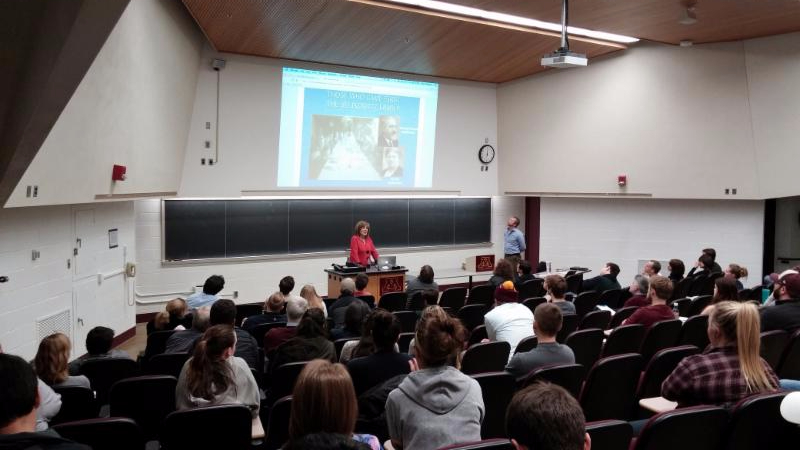My name is Joshkin Sezer. I am a history major who is starting his third year at the University of Minnesota – Twin Cities. In the Spring Semester of 2015, I enrolled in History of the Holocaust, instructed by Adam Blackler. Near the end of the semester, we got the chance to hear a talk from a Holocaust survivor, Irene Berman. She had just published a book detailing her experience as a child in Norway during the Holocaust and how her family managed to survive.
After taking some time to think about Irene Berman’s talk to my class, I continue to be intrigued by what I learned about the Norwegian Jewish population and their struggles during the Holocaust. It is not a topic that comes up very often (if ever) in the United States. It was not until I enrolled in the History of the Holocaust at the University of Minnesota that I developed a better sense of what life was like for Jews who lived outside of Eastern and Central Europe.
Though the crimes of the Third Reich cast a long shadow, Irene’s story made that a reality for those of us who listened to her presentation. She gave a face to the victims of Holocaust. It is far too easy to become overcome by numbers and statistics when we think of the crimes committed by the Nazis. Is it possible to know the entire story? Certainly not, but learning a few of them will no doubt help to prevent a future Holocaust.
 And it was not just Irene’s talk that provided a face to those that were lost. Adam also did a great job in offering a human element to the story. He was helped in part by his refusal to create black-and-white narrative. Indeed, saying, “all Germans were Nazis” and that “all Jews helpless sheep” does a tremendous disservice to the complexity and tragedy of the events that comprise the Holocaust. Nothing was inevitable. Conscious actors made decisions to participate. “How” and “why” are more difficult questions to answer, and as such were the central focus of Adam’s course.
And it was not just Irene’s talk that provided a face to those that were lost. Adam also did a great job in offering a human element to the story. He was helped in part by his refusal to create black-and-white narrative. Indeed, saying, “all Germans were Nazis” and that “all Jews helpless sheep” does a tremendous disservice to the complexity and tragedy of the events that comprise the Holocaust. Nothing was inevitable. Conscious actors made decisions to participate. “How” and “why” are more difficult questions to answer, and as such were the central focus of Adam’s course.
But what form might this take outside of the classroom? In my opinion, museums are among the best examples that can provide a human element to history. Unfortunately, however, the most important audience — children and young adults — often avoid them out of fear of boredom, or only go as part of a class fieldtrip or family vacation. In June 2015, I traveled to Washington, D.C. to visit a friend. While there, we went to the United States Holocaust Memorial Museum, which Adam often referenced in class. When I got to the Museum, I saw the trouble with taking kids in 7th or 8th grade to the Museum. While there, I found out is that a lot of these kids do not actually care about the subject of the Museum. They are more interested taking selfies, talking loudly and laughing.
I took this class hoping to answer a basic question: “What exactly is the point of studying history?” As a history major, I get asked this question all the time, and I do not always have an adequate answer to it. After this class, though, I can honestly say that the point of studying history is to better understand the human condition. History is not a mere collection of events and social movements that inevitably occurred, but a collection of actions and consequence made by individuals. People who had hopes, dreams, and desires all of their own.
One day I hope to be a teacher, and everything I have learned in this class will be useful for teaching kids not only about the Holocaust, but also about how to consider history in a more nuanced way.

Comments